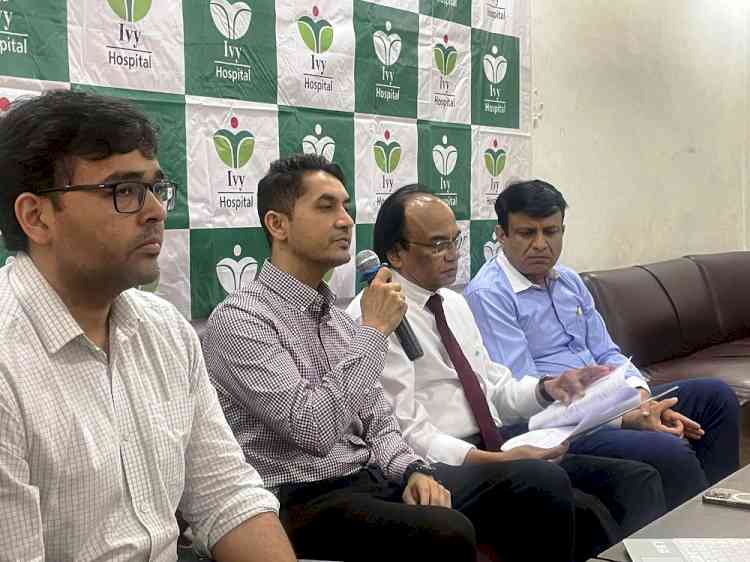Haryana Government issues advisory to farmers not to burn wheat stubble
Author(s): SK VyasChandigarh, May 6, 2015: Haryana Government has issued advisory to the farmers not to burn wheat stubble and try to recover it with the help of machines for use as fodder or should convert it into manure as it leads to...

Chandigarh, May 6, 2015: Haryana Government has issued advisory to the farmers not to burn wheat stubble and try to recover it with the help of machines for use as fodder or should convert it into manure as it leads to manifold increase in the air pollution level during harvesting season.
While stating this here today, a spokesman of Haryana State Pollution Control Board said that the Environment Department had already issued a notification regarding prohibition on burning of agriculture waste in open fields under the provisions of Air (Prevention & Control of Pollution) Act, 1981.
He said that all the Regional Officers of Haryana State Pollution Control Board has been directed to keep a strict vigil in the ongoing harvest season of wheat and file prosecution cases in the Environment Courts against the defaulting farmers indulging in the practice of burning of wheat stubble and paddy straw.
The spokesman said that the Board has filed prosecution action against 32 farmers, who were found burning their agriculture waste in the open field in Special Environment Court at Kurukshetra and Faridabad during past years. While some of the farmers have been convicted and punished with imprisonment and fine by the Special Environment Courts, other cases are pending for decision and the same would soon be given by the Environment Courts. The Board has approved nine prosecution cases for filing in the Environment Courts against farmers for violation of stubble burning for year 2015-16 so far, he added.
He said that the farmers are being advised against burning of agriculture waste and their harmful effects. Apart from this, the Remote Sensing Study for area estimation of burning is also being carried out by Haryana Space Application Centre (HARSAC).
The spokesman said that the Agriculture Department is promoting the use of various machines and techniques for in-site management of crop residue to prevent loss of invaluable soil nutrients, minerals and improvement of general soil health. The Agriculture department is also giving subsidy for purchase of such machines that is happy seeder, turbo seeder, shredder, bailing machine and zero-seed-cum-fertilizer drill to facilitate in-situ management of crop residue. The farmers could contact the office of the Agriculture Department of the respective district in this regard, he further added. Moreover, the wheat stubble could also be sold to cardboard making industries.
The spokesman said that the farmers were indulging in the practice of burning of Wheat stubble and paddy straw every year which leads to manifold increase in the air pollution level during harvesting season. The soil fertility is also lost due to burning of the essential nutrients as it is estimated that burning of one tonne of rice straw accounts for loss of 5.5 kilo gram (kg) Nitrogen, 2.3 kg phosphorus, 25 kg potassium and 1.2 kg sulphur. He said that generally crop residues of different crops contain 80 per cent of Nitrogen (N), 25 per cent of Phosphorus (P), 50 per cent of Sulphur (S) and 20 per cent of Potassium (K). If the crop residue is incorporated or retained in the soil itself, it gets enriched, particularly with organic Carbon and Nitrogen, he added.
He said that heat from burning residues elevates soil temperature causing death of beneficial soil organism that is fungi, pests, reptiles etc are burnt which otherwise are beneficial for the crops. Apart from this, the incidents of fire hazards also occur due to burning of waste and many times nearby houses and valuable property also catch fire due to this. The smoke emanating from burning of agriculture waste becomes the cause of many road accidents.
He said that crop residues burning is a potential source of Green House Gases (GHGs) and other chemically and radioactive important trace gases and aerosols such as CH4, CO, N2O, NOx and other hydrocarbons. it is estimated that upon burning Carbon (C) present in rice straw is emitted as CO2 (70 per cent) and CH4 (0.66 per cent) while 2.09 per cent of Nitrogen (N) in straw is emitted as N2O. Besides, burning of crop residue also emits large amount of particulates that are composed of wide variety of organic and inorganic species. Many of the pollutants found in large quantities in biomass smoke are known or suspected carcinogens and could lead to various air borne and lung diseases. Due to global warming there is adverse effect on rainfall also, he added. / (SK Vyas, Jalandhar)
Date:
Wednesday, May 6, 2015

 cityairnews
cityairnews 















